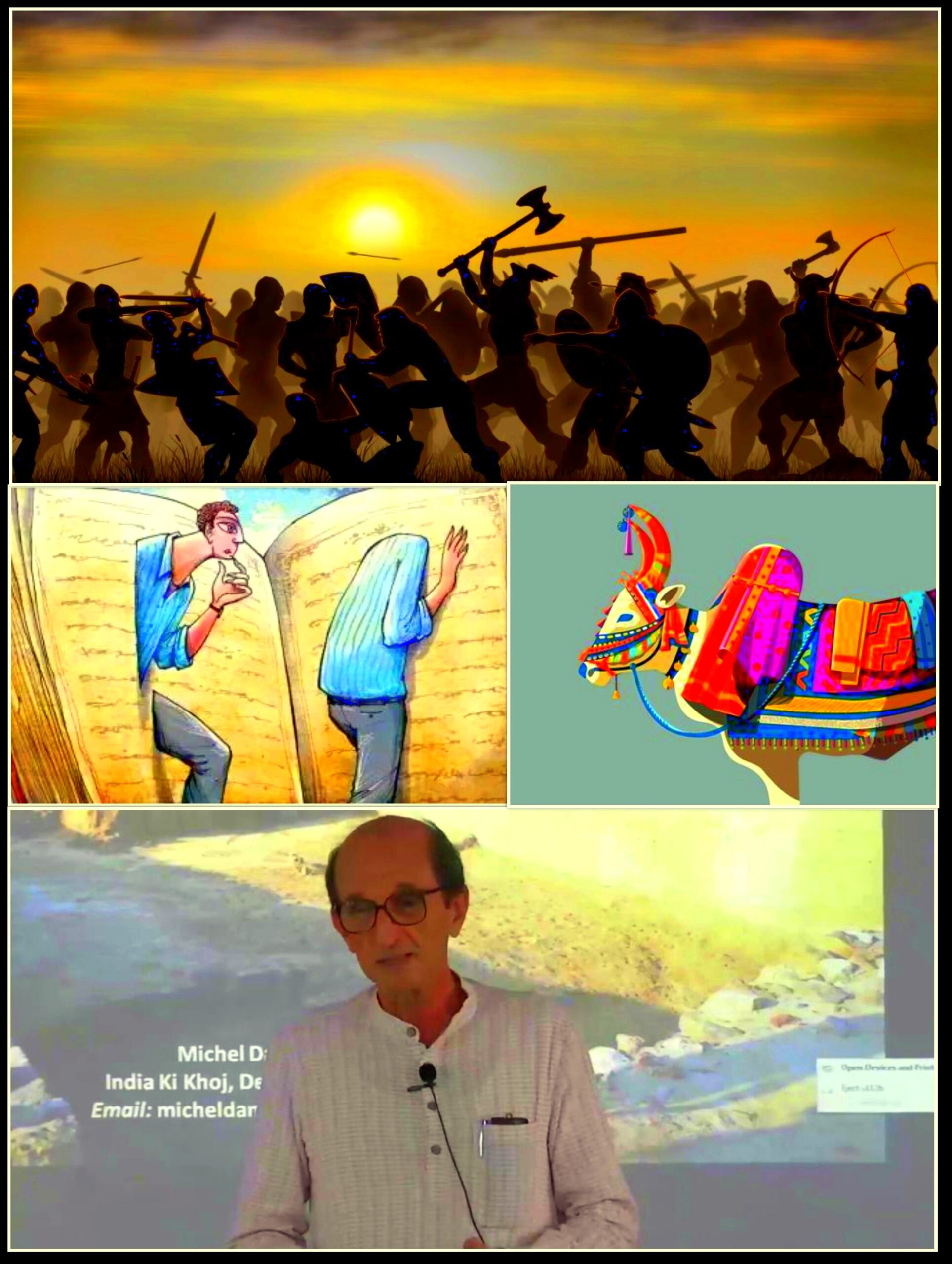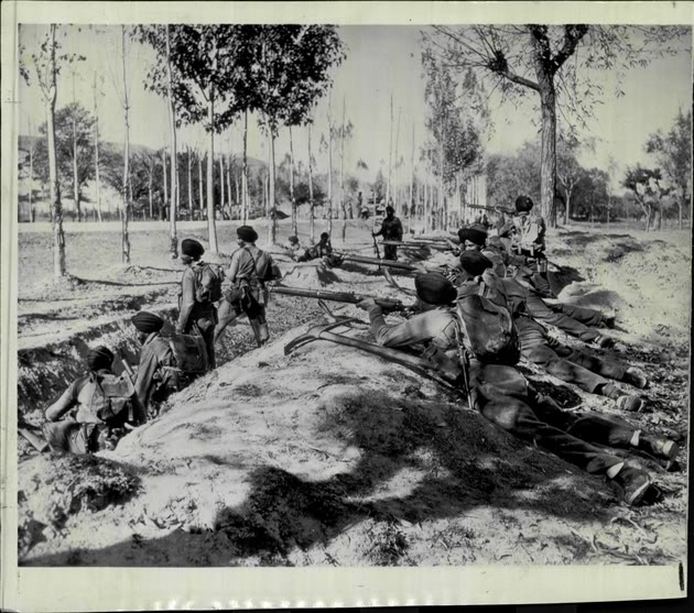- Visitor:110
- Published on:
The quintessential carvings of Konarak: where Architecture speaks the Language of Astronomy
Konarak, the architectural marvel of India is also known as the Black Pagoda, Arka-kshetra, Padma Kshetra or most popularly the Sun temple of Odisha. This outstanding testimony is aptly praised by Rabindranath Tagore as “the language of stone surpassing the language of man”.
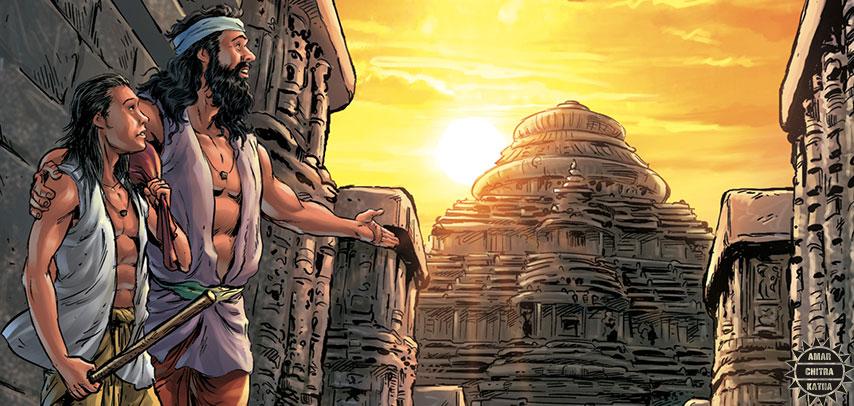
Konarak, the architectural marvel of India is also known as the Black Pagoda, Arka-kshetra, Padma Kshetra or most popularly the Sun temple of Odisha. The ruins of this UNESCO World Heritage Site are located 21 miles to the northeast of Puri in the sands of sea. Though its major parts are now ruined but anyone can witness the real art sculptures in the Sun Temple Museum. The overall shape of the temple represents the chariot of the Sun God. One can also catch the sight of everything under the sun of India’s past through the sculptures, every inch-places wonderfully carved, depicting everyday lives like men trying to capture elephants, rows of athletes, journeys, lady cooking, feeding of child, elephants uprooting trees, hunting events and military procession.
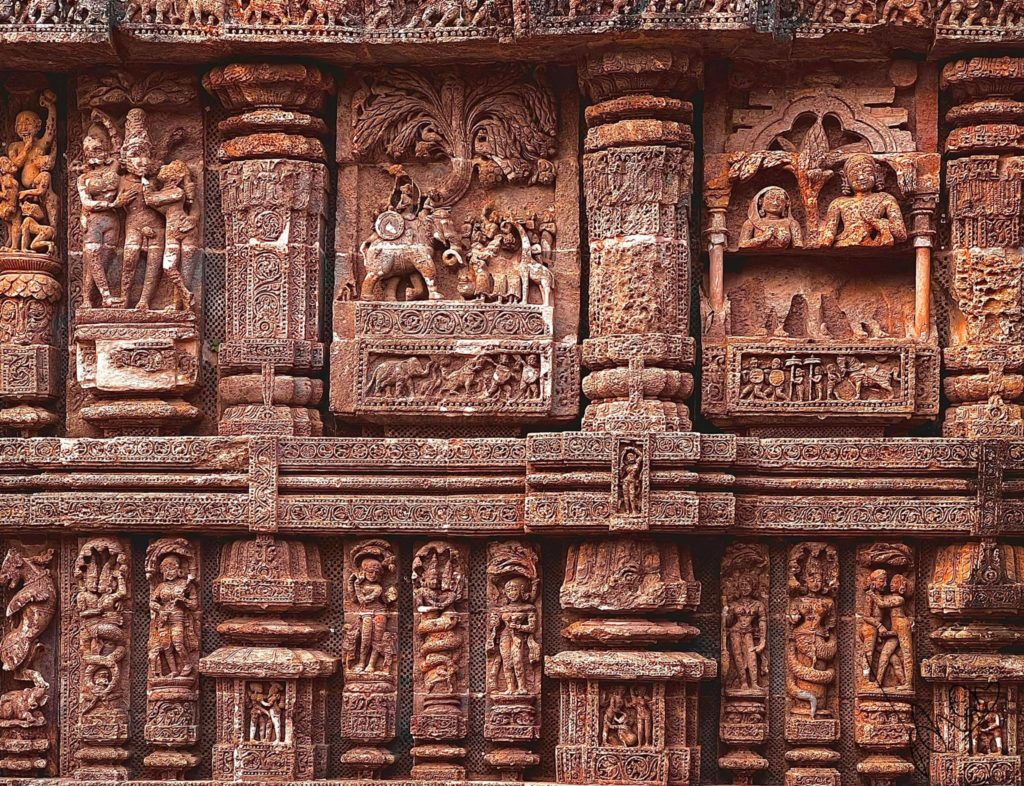
This unique artistic achievement exemplifies the quintessential qualities of the Kalinga style of architecture that involves Shikhara or crown, Jagmohana or audience hall, Natmandir or dance hall and Vimana or tower. One special feature of this holy place is the sun-rays moving along the large carved wheels, whose spokes work as sundials and indicate what time of day the observer is witnessing it. Previously, the sun rays used to reach the main temple tower or Deul from the coast and got reflected from the diamond present at the center of the idol. Two giant lions of stone still guard the temple’s entrance and they seem to reveal something in appreciation of this glorious heritage and pride. Further, they represent pride and are seen to be killing two giant elephants that denote wealth and two human beings are found devastated under these behemoth’s feet.
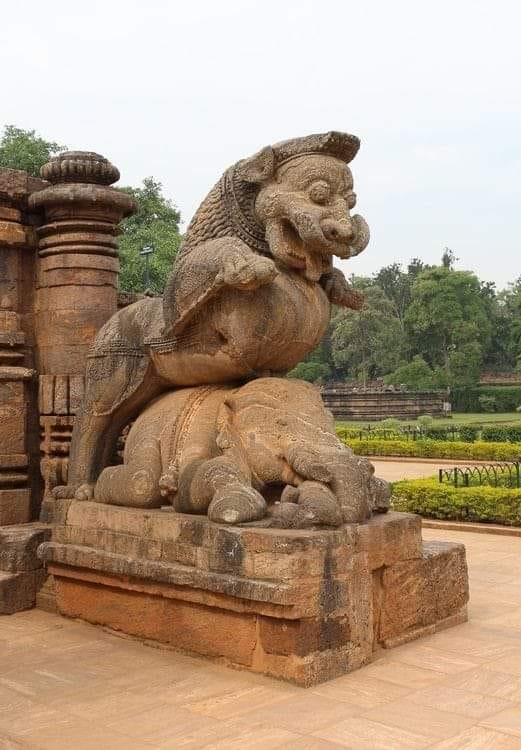
The sea lies about 2 miles southeast of the temple and the dry Chandrabhaga, a tributary of Prachi river can be seen half a mile north of it. The king of Orissa, Raja Narasimhadeva II of the Eastern Ganga dynasty has mentioned in a copperplate inscription about his grandfather Narasimhadeva I that in one corner (some scholars argue that it is at Padma-Kstera, at north-east corner of Puri or Chakrakhetra) he built the home dedicated to the Sun God. Again, according to some experts, the God of this direction or corner is Konarak. The name Konark comes from a couple of Sanskrit words. They are “kona” meaning corner and “arka” or sun. Thus the town Konarak has its name due to its specific geographical location where the sun seems to rise at an angle. Legend has it that a large magnet was present at the top of this temple. The idol was floating in air due to magnetic effect of the arrangements. Many ships have been in trouble due to the effect of that magnet. The Muslims massacred the building and stole the magnet. Then, the idol of the Sun God was displaced to Puri. Currently, what is now seen as the Konarak Temple is just a part of the old lost temple. The area where the idol of the Sun God was there is shattered long before and the idol is also lost. Only, the 17/9 square feet alter is still present.
The image of Krishna’s son from Jambavati, Samba is there on its body. The original idol was the one, worshipping whom Samba claimed to be free of leprosy. The other idols carved on the temple of this perfect assimilation of Odia and Dravidian style architecture narrate the event when Samba arrived with other people and celestial beings. The present temple is the former assembly hall (known as Jag Mohan in Odia) with geometrical patterns around it approximately 140 feet in height. Although it is also called a black temple, it is not carved out of any black stone. Here, the main material used is sandstone with chlorite, laterite and khondalite rocks. Its front side looks black from a distance and hence it is called the Black Pagoda by Western scholars for its compilation of black stone carvings. The dark color helped the ancient sailors to reach the Eastern Ghats.
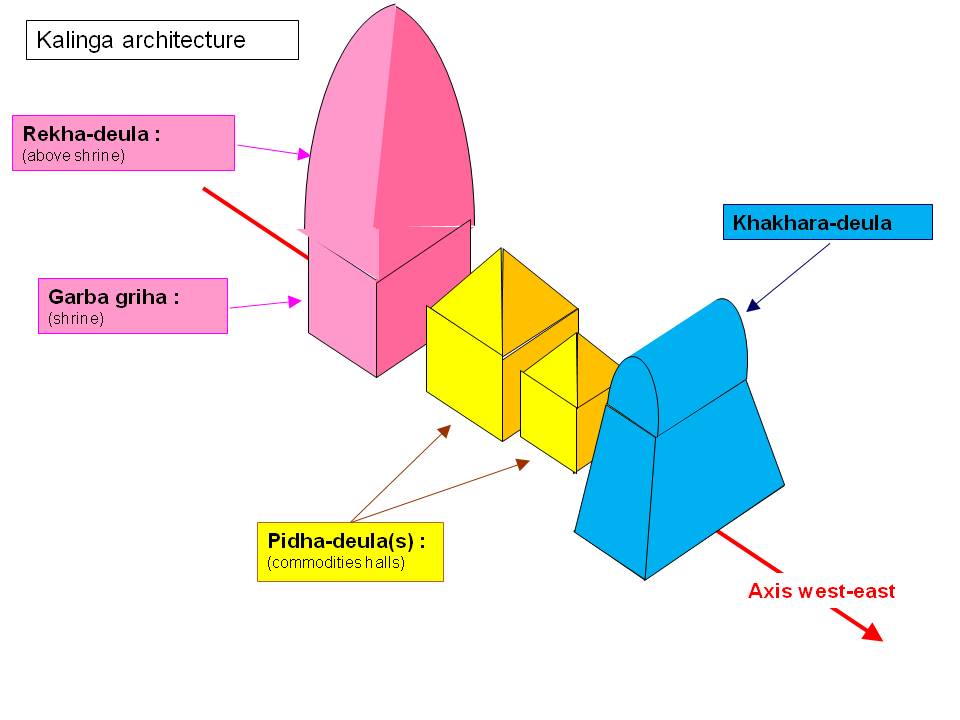
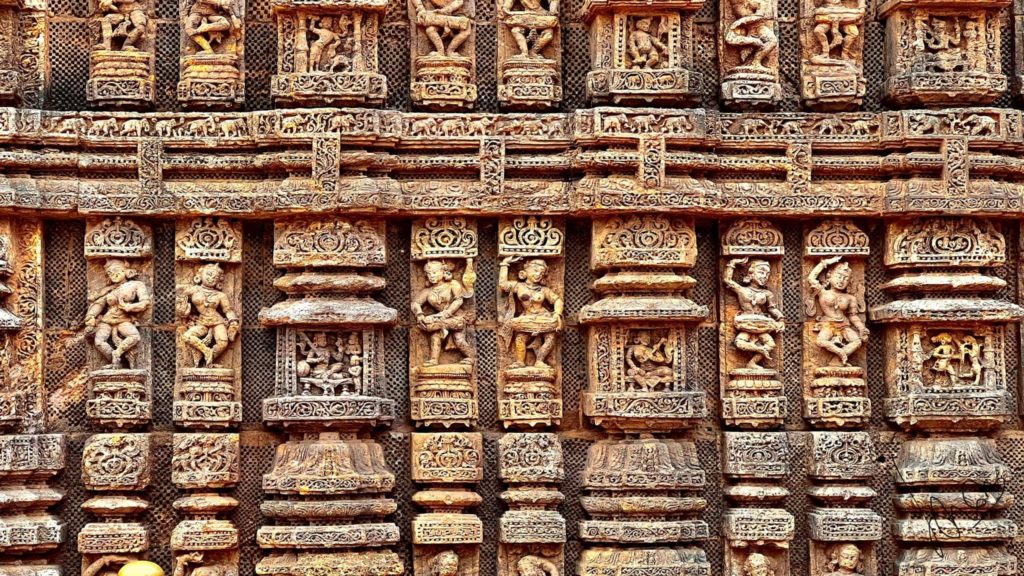

‘Langula’ Narasingha Deva I managed his place in the sun as a very powerful monarch and warrior who defeated the Muslim forces of Bengal like Tughan Khan who constantly threatened him from the times Anangabhima Deva III, his father. He ordered 1200 workers to construct the entire temple in exactly 12 years to celebrate his power and dominance against Islamic invaders as if the sun shines out of his backside. However, the golden framed roundabout named Dadhi Nauti that has to be installed at the top fell down repeatedly. This put the lives of the laborers in trouble that also involved the name of their chief architect Vishnu Maharana in the hit-list. All the artists were tensed as the ruler declared that if they fail to accomplish their task by the given deadline, their heads would be chopped off.

On the last night, a twelve year boy came to Vishnu and introduced his identity as Dharmapada, Vishnu’s son, whom he is seeing now for the first time in last 12 years. He assured that he would resolve the issue and as he kept his commitment he climbed up and jumped off to river Chandrabhaga to save the prestige of his father and his co-workers. This event ruined the ego of the king who might have thought that the sun rises and sets only on him. Nevertheless, the worshipping rituals are not done there as the people believe that the Sun-god himself came in human form and Dharmapada’s sun has set to save people’s lives.
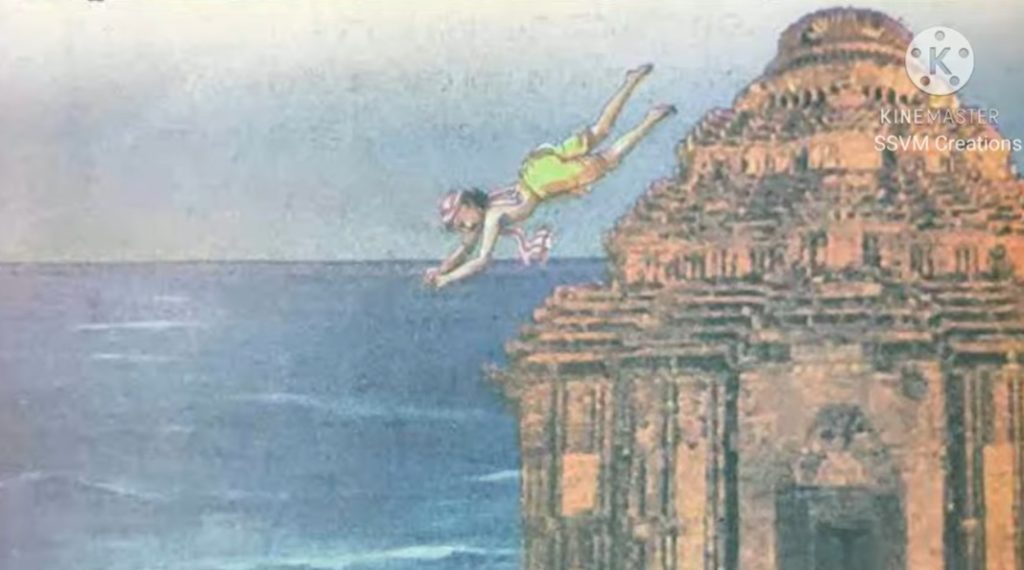
The huge revenue collected for 12 years was spent on this temple construction. As per the analysis of ancient scripts in the book by Raha Rajendralal Mitra named “Antiquities of Orissa” Calcutta, 1830, (Vol. II, p, 156), the time of building is 1200 Saka era or 1278 C.E. Again, archaeologist Manmohan Roy claims that as evident from the copper inscriptions of Ganga dynasties, during the 18th year of the reign of Langula Narasimhadeva, the temple was built i.e. in 1276 CE. It is to be noted that the annual revenue of Orissa at that time was 3 crores.

Again, the Marathas built few temples in Srikshetra from the walls of the temple. During the reign of Marathas from 1756 to 1800 CE, the pillar named Arun Stambha is displaced and established in front of the main gate of Puri’s Jaganattha temple. Sribishan Swarup mentions in his English book that Purandar Keshari, the ruler of Keshari dynasty rebuilt this temple and appointed 8 Brahmins there for service. Long after him, Anangabhim, the king of Ganga dynasty ordered to increase in the quantity of food offerings there. His son was Narasimhadev who built the new temple.
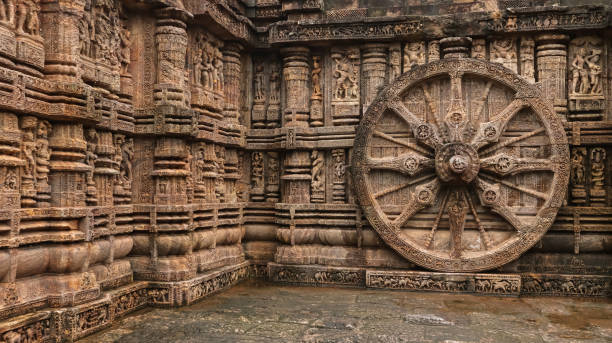
As Sri Chaitanyadev was residing in Nilachal, overwhelmed in a mood dedicated to the divine, one autumn moon-lit night jumped into the sea and floated in the dazzling waves towards Konarak. This event is found mentioned in many local legends, unauthentic books, besides Sri Chaitanyacharanamrita. This outstanding testimony for the moment in the sun of 13th-century Odissa, an Indian kingdom is aptly praised by Rabindranath Tagore as “the language of stone surpassing the language of man”. Nonetheless, now the elements of its structural integrity are affected by monsoon rains and soil erosion. Some damage is also caused due to erosion of metal cramps on which the structure is based because of salt air. Various conservation programs are done by the Archaeological Survey of India with the help of national, regional and local representatives. Here, five effective management plans include safety, master planning, environment, development and tourism. The structural stability is also maintained due to funds from World Heritage initiatives. Since Konarak is a coastal town, it is suitable to be visited during winter or the time between September and March. One must avoid the summer due to humidity and hot weather and also, lazing around under the sun during the day to experience the great masterwork and creativity while observing intricacies of the carvings can be exhausting. The best time suggested to visit is in the morning itself.
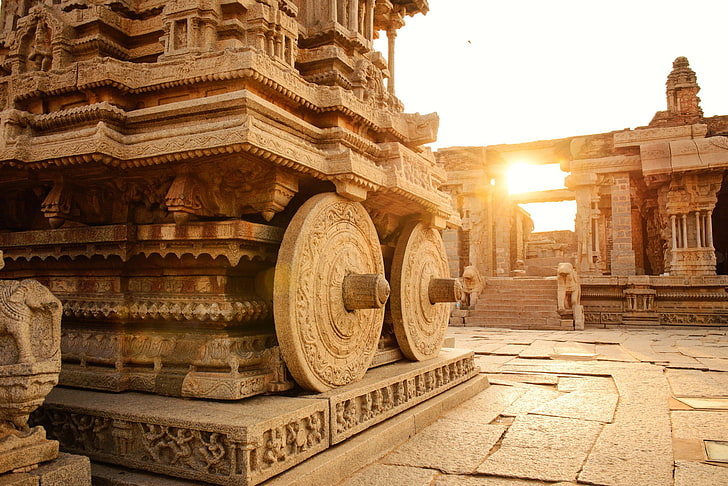
Bibliography:
Srikshetra (Bengali) by Srimat Sundarananda Bidyabinod
https://www.toshalisands.com/konark-sun-temple/
https://kidadl.com/facts/captivating-konark-sun-temple-facts-that-you-need-to-know-right-now
https://www.masterclass.com/articles/konark-sun-temple-history-and-architecture#quiz-0
https://whc.unesco.org/en/list/246/
https://en.wikipedia.org/wiki/Kalinga_architecture
Images:
https://www.dreamstime.com/photos-images/konark-sun-temple.
https://www.youtube.com/watch?v=oFp_zAa89i0
https://www.facebook.com/groups/VASILESCU/posts/1796721120465756/
Center for Indic Studies is now on Telegram. For regular updates on Indic Varta, Indic Talks and Indic Courses at CIS, please subscribe to our telegram channel !
- 55 min read
- 0
- 0







